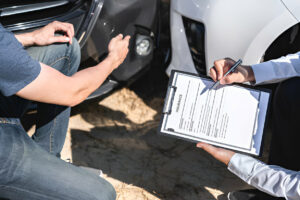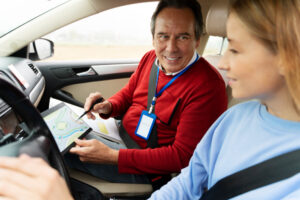What Are Hit and Run Accidents?
A hit-and-run accident occurs when a driver responsible for the accident leaves the scene without exchanging contact or insurance details. This is illegal, as it is a requirement for drivers involved in an accident to stop and provide their information. There are various types of hit-and-run accidents.
These can include instances where:
- A vehicle attempts to leave the scene unnoticed.
- A driver fails to stop due to traffic delays.
- The driver is uninsured or involved in criminal activity.
If you’re involved in a hit-and-run accident with an uninsured vehicle and wish to file a compensation claim, you can submit your claim to the Motor Insurers’ Bureau (MIB). They will review the evidence and compensate you based on the severity of your injuries, recovery time, and damages.
Reporting the Incident
Even if you do not have the other driver’s contact details, it is crucial to report the accident to the police. They will investigate, examining videos, CCTV footage, and photographs from the scene and speaking to witnesses to determine fault. The police will also check surveillance footage to help trace the driver.
Penalties for Hit and Run Offenses
Leaving the scene of an accident is a serious offence. The penalties for a hit-and-run driver can include:
- Six months’ imprisonment or a fine.
- In more serious cases, such as fatal accidents, the penalties can be severe, with imprisonment of up to 14 years.
- Additional liabilities may include compensating the family of the deceased or the injured party.
Hit-and-run offences often involve negligence or reckless driving, and if significant damage or personal injury occurs, the penalties are likely to be more severe. Convictions can also result in 5-10 penalty points on your driving license.
Steps to Take After a Hit-and-Run Accident
If you’re involved in a hit-and-run accident, follow these steps immediately:
- Stop and Park your vehicle to ensure safety.
- Ensure that everyone in the vehicle is safe.
- Report the incident to the police as soon as possible.
- Contact your insurance company to inform them of the accident.
- Seek medical attention by contacting your GP or visiting a hospital.
-
- Gather evidence from the scene, including Photographs of vehicle damage and the accident scene.
- Witness statements.
- Any nearby CCTV footage or surveillance cameras.
Road Traffic Act 1988
Under Section 170 of the Road Traffic Act 1988, failing to stop and provide details after an accident is an offence. If a driver fails to stop and report the accident, the case is treated as a hit-and-run.
You may be able to defend the offence under certain circumstances, such as:
- You were not the driver of the vehicle.
- You were not in a public place at the time of the accident.
- You stopped to exchange details, but the other party fled.
- You were unaware of the accident at the time.
- You were out of the country when the accident occurred.
Role of the Motor Insurers’ Bureau (MIB)
In cases where the responsible driver leaves the scene and cannot be traced, the Motor Insurers’ Bureau (MIB) can assist. MIB is an organization that compensates individuals involved in accidents with uninsured or untraced drivers.
When claiming MIB, you must provide evidence that you were involved in the accident and that the other driver was not identified. A solicitor or accident management company can help you gather the necessary evidence and submit the claim to MIB.
The MIB works closely with the DVLA and the police to maintain a Motor Insurance Database (MID), which helps trace uninsured vehicles and hit-and-run drivers.
What Happens if the Vehicle is Not Registered?
If the vehicle involved in the accident is not listed on the Motor Insurance Database (MID), there are several possibilities:
- The car may have an Off-Road Notification (SORN).
- There could have been an error during the insurance process.
- The vehicle might be uninsured.
What to Do if Vehicle Details Are Incorrect
If your vehicle is insured but cannot be found on the MID search, the registration details on your insurance policy may be incorrect. Review your policy documents to verify the information, or contact your insurance provider to check the details.
Common mistakes that can occur include:
- Typos or missing letters in the vehicle registration number.
- Incorrectly listed characters (e.g., confusing “0” with “O”).
Conclusion
Gathering as much evidence as possible, including witness statements, photographs, and any CCTV footage available, is crucial in hit-and-run accidents. If the driver responsible for the accident fails to stop, the case will be considered a hit-and-run.
If the vehicle is uninsured, it can result in:
- A £300 fine.
- 5-10 penalty points on your driving license.
You can request information from the claims underwriting data controller to check your claim history.






